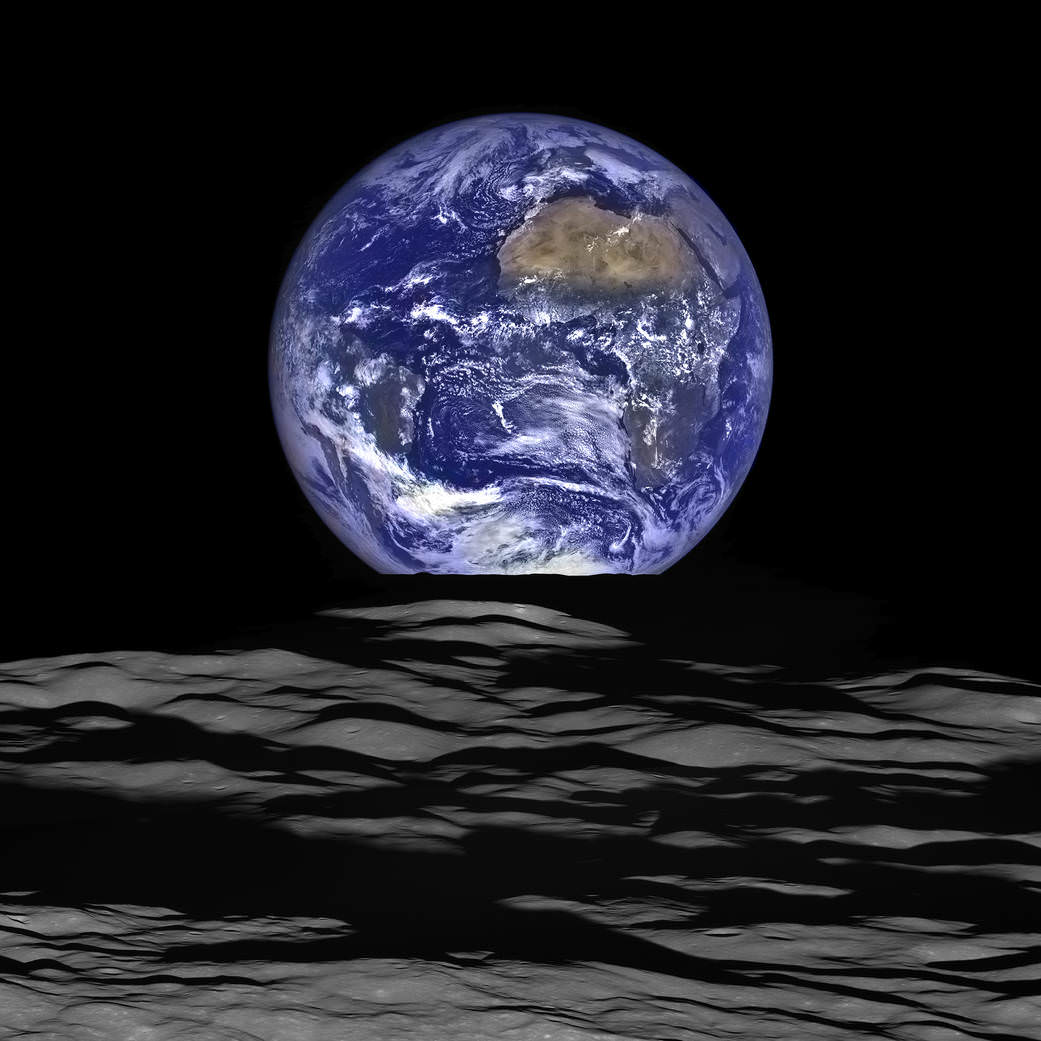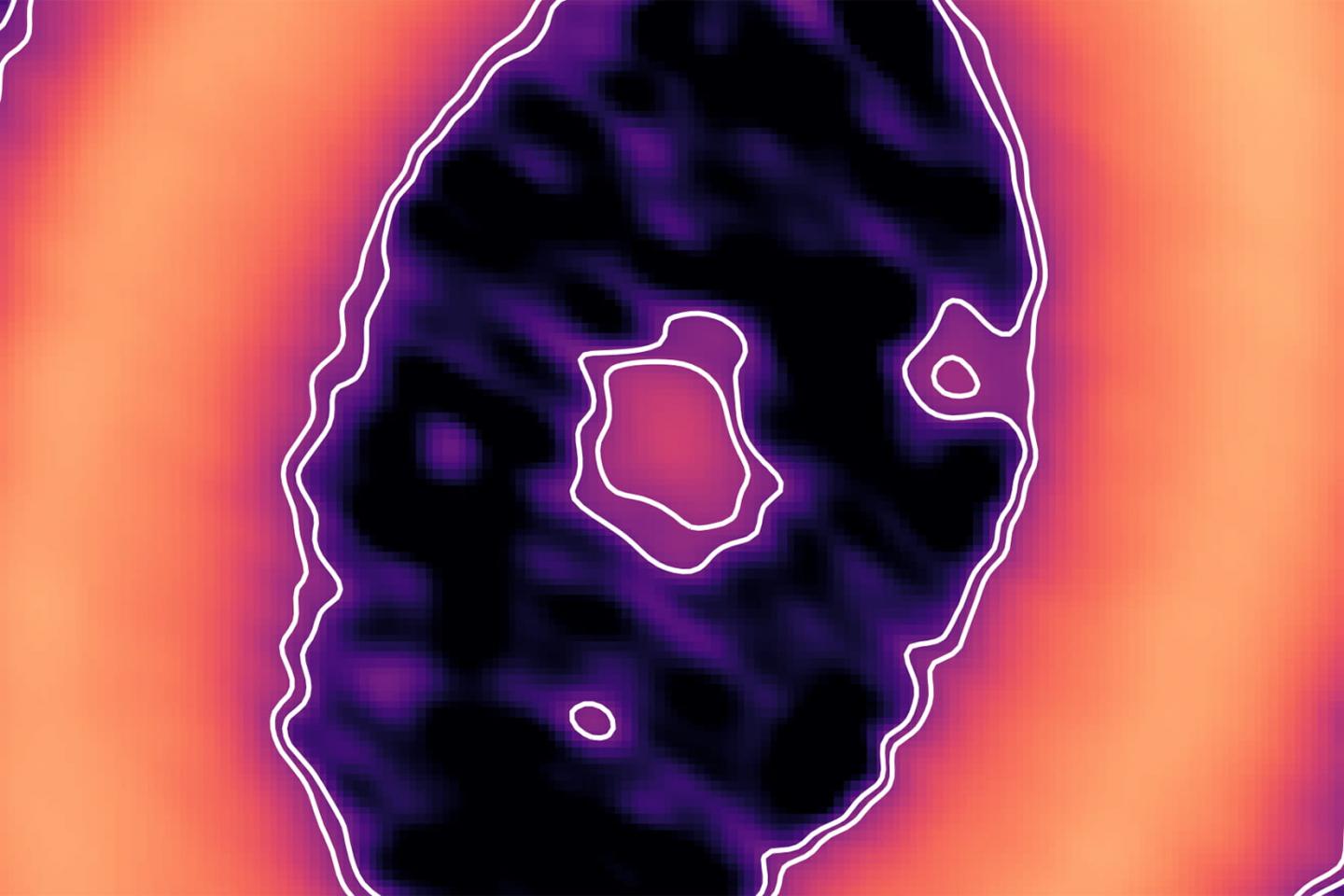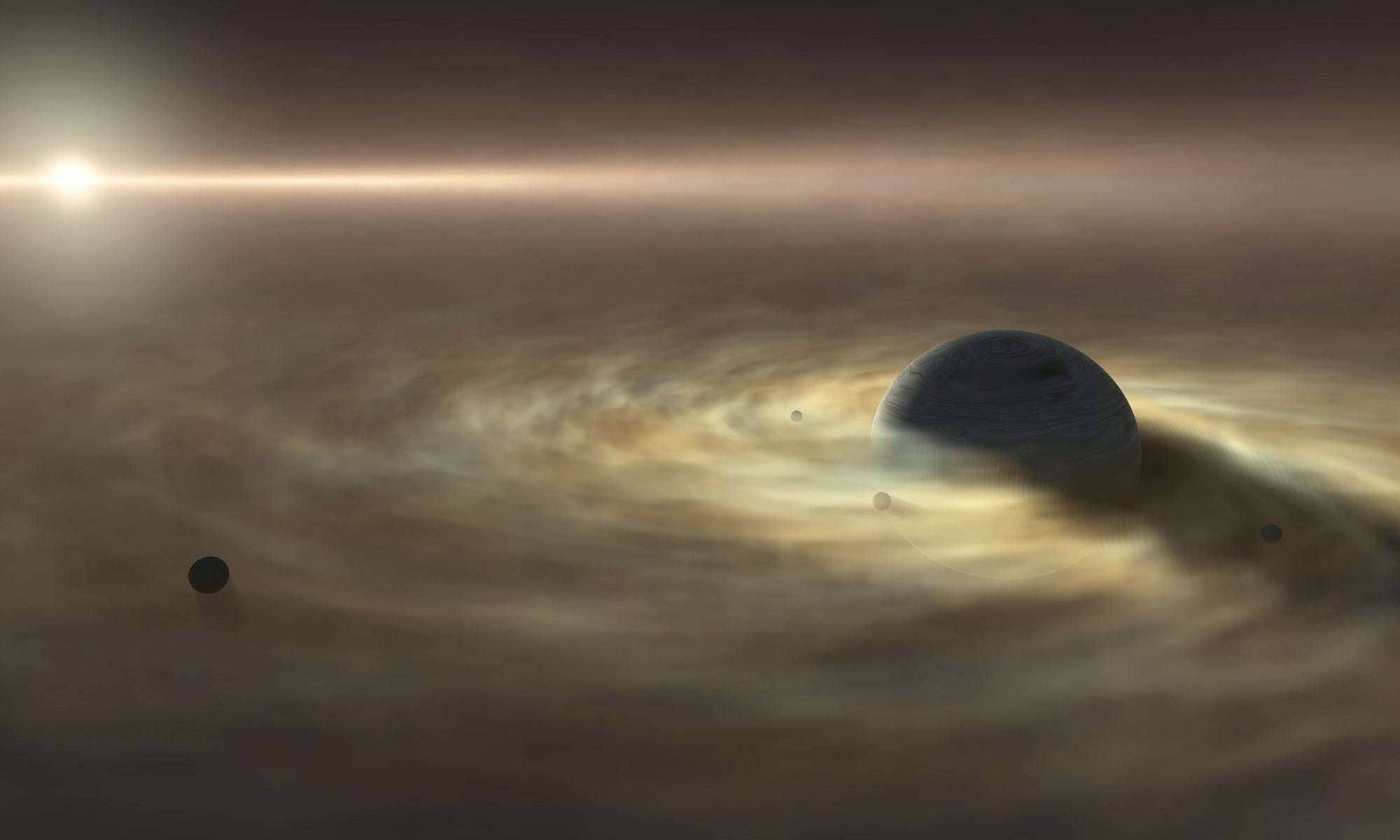The origins of the Moon have been the cause of many a scientific debate over the years but more recently we seem to have settled on a consensus. That a Mars-sized object crashed into Earth billions of years ago, with the debris coalescing into the Moon. The newly formed Moon drifted slowly away from Earth over the following eons but a new study suggests some surprising nuances to the accepted model.
Continue reading “When Earth Danced with Polar Moons”Did An Ancient Icy Impactor Create the Martian Moons?

The Martian moons Phobos and Deimos are oddballs. While other Solar System moons are round, Mars’ moons are misshapen and lumpy like potatoes. They’re more like asteroids or other small bodies than moons.
Because of their odd shapes and unusual compositions, scientists are still puzzling over their origins.
Continue reading “Did An Ancient Icy Impactor Create the Martian Moons?”Massive Rocky Planets Probably Don’t Have big Moons

The Moon has orbited Earth since the Solar System’s early days. Anyone who’s ever spent time at the ocean can’t fail to notice the Moon’s effect. The Moon drives the tides even in the world’s most remote inlets and bays. And tides may be vital to life’s emergence.
But if Earth were more massive, the Moon may never have become what it is now. Instead, it would be much smaller. Tides would be much weaker, and life may not have emerged the way it did.
Continue reading “Massive Rocky Planets Probably Don’t Have big Moons”Weekly Space Hangout: December 9, 2020 – Casey Dreier: Are Changes Coming to NASA/US Space Policy?
We are pleased to once again welcome Casey Dreier from the Planetary Society to the WSH. Casey will update us (as much as possible) about Space Policy changes that may occur once the new American Presidential administration takes office on January 20, 2021.
Continue reading “Weekly Space Hangout: December 9, 2020 – Casey Dreier: Are Changes Coming to NASA/US Space Policy?”Evidence that Mars Used to Have a Ring
Mars only has two moons: Phobos and Deimos. They’re strange, for moons, little more than lumpy, potato-shaped chunks of rock. They’re much too small for self-gravitation to have made them round. And one of them, Deimos, has an unusually tilted orbit.
What does that slight tilt tell us about Deimos? About Mars?
Continue reading “Evidence that Mars Used to Have a Ring”Gas and Dust Stop Planets From Eating Their Moons
Beyond Earth’s only satellite (the Moon), the Solar System is packed full of moons. In fact, Jupiter alone has 79 known natural satellites while Saturn has the most know moons of any astronomical body – a robust 82. For the longest time, astronomers have theorized that moons form from circumplanetary disks around a parent planet and that the moons and planet form alongside each other.
However, scientists have conducted multiple numerical simulations that have shown this theory to be flawed. What’s more, the results of these simulations are inconsistent with what we see throughout the Solar System. Thankfully, a team of Japanese researchers recently conducted a series of simulations that yielded a better model of how disks of gas and dust can form the kinds of moon systems that we see today.
Continue reading “Gas and Dust Stop Planets From Eating Their Moons”The Moon is Older Than Scientists Thought

The most comprehensive and widely-held theory of how the Moon formed is called the ‘giant impact hypothesis.’ That hypothesis shows that about 150 million years after the Solar System formed, a roughly Mars-sized planet named Theia collided with Earth. Though the timeline is hotly-debated in the scientific community, we know that this collision melted Theia and some of Earth, and that molten rock orbited around Earth until it coalesced into the Moon.
But now a new study, though not contradicting the giant impact hypothesis, is suggesting a different timeline, and an older Moon.
Continue reading “The Moon is Older Than Scientists Thought”Here’s a First. Astronomers See a Moon Forming Around a Baby Exoplanet

Astronomers have discovered, for the first time, moons forming in the disk of debris around a large exoplanet. Astronomers have suspected for a long time that this is how larger planets—like Jupiter in our own Solar System—get their moons. It’s all happening around a very young star named PDS 70, about 370 light years away in the constellation Centaurus.
Continue reading “Here’s a First. Astronomers See a Moon Forming Around a Baby Exoplanet”Without the Impact that Formed the Moon, We Might Not Have Life on Earth

The Earth wasn’t formed containing the necessary chemicals for life to begin. One well-supported theory, called the “late veneer theory”, suggests that the volatile chemicals needed for life arrived long after the Earth formed, brought here by meteorites. But a new study challenges the late veneer theory.
Evidence shows that the Moon was created when a Mars-sized planet named Theia collided with the Earth. The impact created a debris ring out of which the Moon formed. Now, this new study says that same impact may have delivered the necessary chemicals for life to the young Earth.



